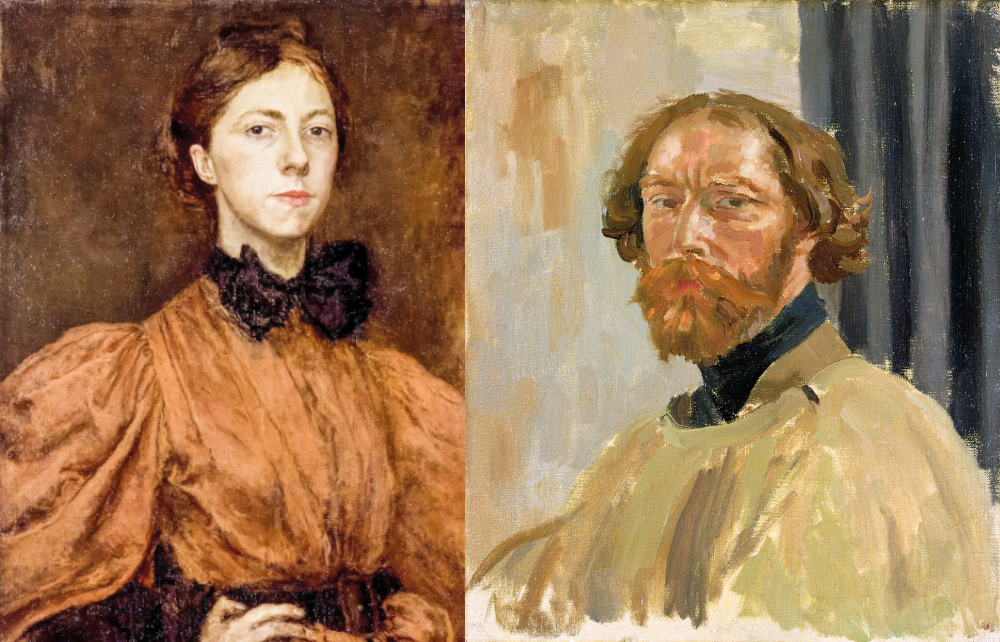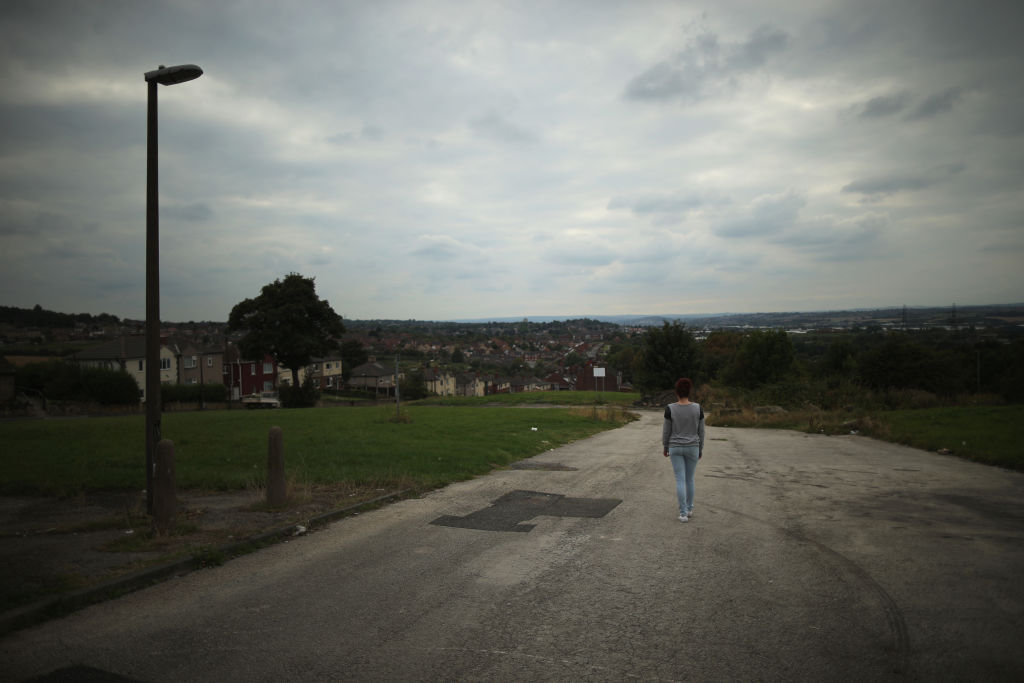
‘In 50 years’ time,’ Augustus John gloomily reflected following his sister’s death on 18 September 1939, ‘I will be known as the brother of Gwen John.’ He was right. In 2004, when the Tate mounted a joint retrospective of Augustus and Gwen John, it was Gwen who had become the major artist. The ‘variable strident chords’ of the self-styled Gypsy King, likened in his youth to Michelangelo, Rembrandt and Raphael, had been supplanted by the ‘sustained minor key’ of the nunlike recluse.
The first decades of the 20th century were what Virginia Woolf described as ‘the Age of Augustus John’; but the praise lathered on him after his own death, aged 83, in 1961 – ‘one of the greatest artists in British history’, ‘a man in the 50-megaton range’, ‘the last of the Titans’ – now seems embarrassing. The reputation of Gus, as Gwen called him, with Judith Mackrell following suit in her absorbing dual biography, had been on the wane since the 1930s. In the 1940s he despaired that ‘my work’s not good enough’. ‘I’m just a legend,’ he said in the 1950s, ‘I’m not a real person at all.’
Again, he was right: Augustus John is remembered now for his flamboyant hats, gold earrings, open marriage and the 100 offspring he is rumoured to have sired. When he walked through Chelsea, it was said, he patted the head of every child he met in case it was one of his own. Aged 82, he wrote to one of his daughters, Amaryllis, that should she ‘ever feel the need’ to have a baby, ‘just give me a nudge and I will do my best’. His suggestion, Mackrell comments, ‘might have been judged goatish, or even outlandish, to an outsider’, but to Amaryllis, ‘it reflected only their private code’.
The middle two of four children, Gwen and Gus were raised in the Welsh seaside town of Tenby, where they ran wild with their sketchbooks. Gwen was eight when their mother died in 1884, and Gus six. ‘Mama’s dead! Mama’s dead!’ the siblings chanted, charging through the house in a crazed state. The near-demented erotic pursuits of their adulthood were born from this early abandonment.
A figure of ‘vast carelessness’, as Mackrell describes him, Gus was a man on the run, brawling and shagging, while Gwen, inward-looking and fearing attention, lived and painted in slow time. He was 6ft and lavishly handsome; she was a wiry and feral 5ft; he was agnostic and she was a Catholic; he chose a large metropolitan existence and she a small life in rural France. They would appear to observers like the tortoise and the hare, but on closer inspection they were, as Gus put it, ‘much the same, really’.
Gus described the force of
his desire as ‘a sort of paranoia or emotional hailstorm’
It is the similarities that Mackrell draws out with her customary care. Cut from the same cloth, brother and sister were both monsters. Artists to the core, they were equally selfish, obsessive and dangerous to know, particularly if you had the misfortune to be loved by one of them. Gus described the force of his desire as ‘a sort of paranoia or emotional hailstorm’; as soon as he was attracted to one woman, who invariably became his model, she would be ‘immediately obliterated’ by another. Gwen was less fickle, but more terrifying. Her passions for both men and women were similarly immediate and overwhelming, affecting her, as she put it, ‘beyond reason’. She behaved like a stalker, besieging her love objects with daily letters, debasing herself, waiting on their every word. Even her mentor Rodin, with whom she was besotted for a decade, was afraid of her. His death in 1917 freed Gwen from her sickness, but her place in his life had been ‘a secret so small’, as Mackrell puts it, that she was not even invited tohis funeral.
When Gus went to the Slade, aged 16, in 1894, Gwen followed suit, but only after a fight. Doors swung open for Gus, but everything Gwen did involved a struggle, initially with their father, Edwin. When he would not let her go to Paris to be taught by Whistler, Gwen marched round the house singing ‘to Paris, to Paris’ until he gave in. When Edwin then told her that she looked, in the white dress she had copied from a painting by Manet, like a prostitute, she excised him from her life.
Included in the Paris trip was Ida Nettleship, Gwen’s best friend at the Slade before she became Gus’s wife when they were both aged 23. His maîtresse-en-titre, the beautiful and otherworldly Dorothy ‘Dorelia’ McNeill, was similarly stolen from Gwen, who then tried to steal her back when Dorelia joined her on a walking tour to Rome. The two women set off together, says Mackrell, like a ‘giddy eloping couple’, but there was what Dorelia called a ‘hard and queer’ quality to Gwen’s character and, having got as far as Toulouse, she eloped instead with a Belgian called Leonard.
No one was allowed to leave Gus, who importuned Dorelia to separate first from Gwen and then from Leonard, and live instead in ‘wonderful concubinage’ with himself and Ida. Gwen, with nothing left to lose, now sided with her brother. Even Ida, who wanted her freedom back, could see the benefits of including Dorelia in the household. Living with Gus, ‘a mean and childish creature’, was pushing her towards a breakdown. And so docile Dorelia, who did what others wanted her to do, returned to England and devoted the next 60 years to Gus and his spawn. When Ida died exhausted, aged 30, after giving birth to her sixth son, Dorelia (who died in 1969) took over the household, at which point this once radiant figure disappears from view.
It is not surprising, given his raids on her emotions, that Gwen now cordoned herself off from Gus. Moving to France, she refused to visit her nephews and nieces in England or use the studio that Gus built for her in his garden. Family was everything to Gus, while for Gwen, ‘the family has had its day. We don’t go to Heaven in families now, but one by one’.
Gwen behaved like a stalker, besieging her love objects with daily letters, waiting on their every word
While Gus’s unconventionality became a pose to sell his paintings, Gwen’s refusal to conform to any socially acceptable female norm was the cost of competing as an artist on equal terms with men. He was greedy, but she was an extremophile. As a student, she was so poor that she would break into abandoned buildings in order to sleep. When she lost her adored cat, she slept in the forest. She died, aged 63, in Dieppe, where she had gone for an overnight stay without bringing any luggage. In the chaos of war, the cause of her death, which appears to have been starvation, was left unspecified on her death certificate, and the details of where she was buried were lost. Her friend Louise Roche described Gwen at the end as ‘treating her body as though she was its executioner… To go to the doctor inconvenienced her, to take solid nourishment inconvenienced her’.
As tough and implacable as a medieval saint, Gwen painted for God. Her pictures were ‘prayers’, not objects to be bought and displayed. Despairing of her unworldliness, her patron, the American collector John Quinn, despatched his mistress, Jeanne Robert Foster, to form a friendship with his elusive genius. ‘All the pathetic dramatisation of life has fallen away,’ Jeanne reported to Quinn. ‘Gwen is real.’
Her life, said Wyndham Lewis, was ‘chaste and bare and sad’. Why, he wondered, had she kept herself ‘so isolated from the influences of her age’? She influenced, however, our own age: the successor of Gwen John is Celia Paul. Gwen’s intransigence and resolve, what Mackrell calls her ‘stubborn grit’, can be seen in her first self-portrait, painted in 1899-1900, when Gus and Ida were falling in love. Here was a woman, hand on hip, who would be no one’s wife or mother, who saw anything but the most primitive domestic conditions as ‘bourgeoise’. Gwen was not eccentric: she had a demon inside her.
It is hard to tell, Mackrell says in her opening pages, if Gus and Gwen were ‘admirable or awful’. By the end of this haunting book they seem admirable in their awfulness.







Comments